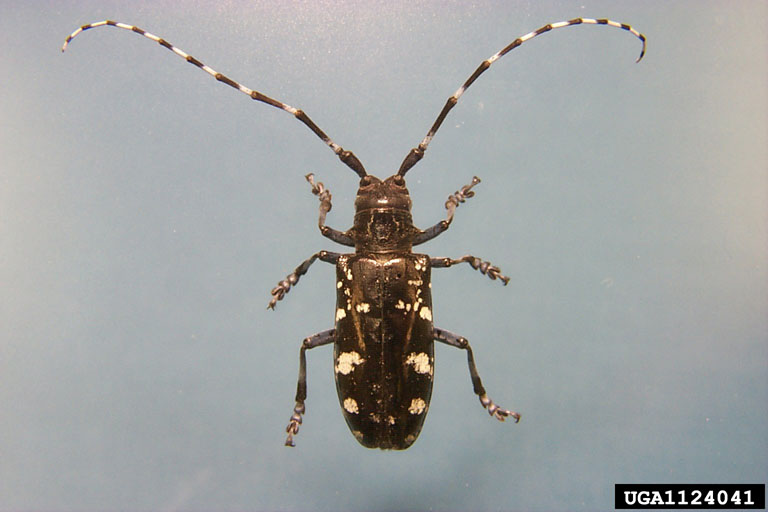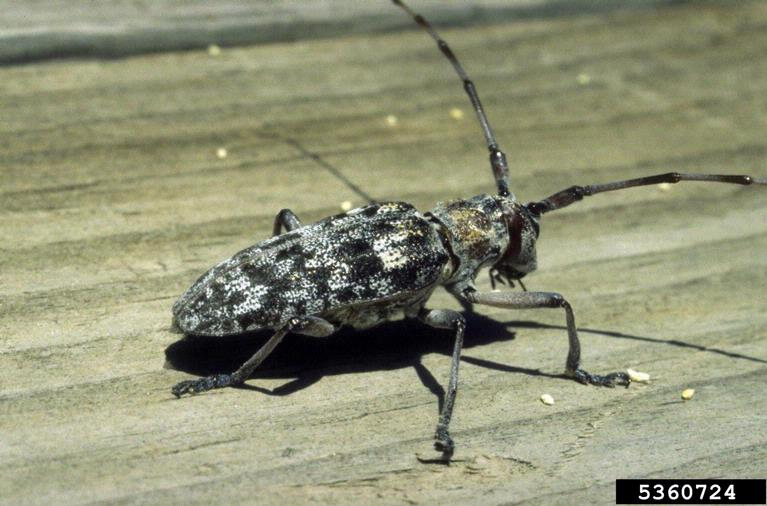FORESTRY
IN SOUTH DAKOTA
Asian Long-Horned Beetle
ALB is not currently found in South Dakota.
The Asian long-horned beetle (ALB), Anoplophora glabripennis, is an invasive beetle that was first detected in New York State in 1996. It is believed to have been introduced to the United States through cargo shipped from Asia. ALB will commonly attack healthy trees that are from the genus maple (Acer), maples such as boxelder, Norway, red, silver, and sugar. Other preferred hosts are birch (Betula), elm (Ulmus), and willow (Salix). This beetle will also occasionally attack ash (Fraxinus) and poplar (Populus). It is a destructive beetle that bores into trees to lay eggs and overwinter. Since ALB can overwinter during multiple stages of its life, adults tend to emerge at different times. Even though adults are found commonly during the summer and early fall, they still can be found from April to December.
ALB can easily be confused with the native Spotted Pine Sawyer Beetle. On ALB, the white spots are more clearly defined on its abdomen and its antennae, while the sawyer beetle are more speckled white. ALB can range in size between 0.75-1.25 inches long while the sawyer beetle ranges in size from 0.75 to 1 inch long.

Asian Long-Horned Beetle by Donald Duerr, USDA Forest Service, Bugwood.org

Spotted Pine Sawyer Beetle, Eugene E. Nelson, Bugwood.org